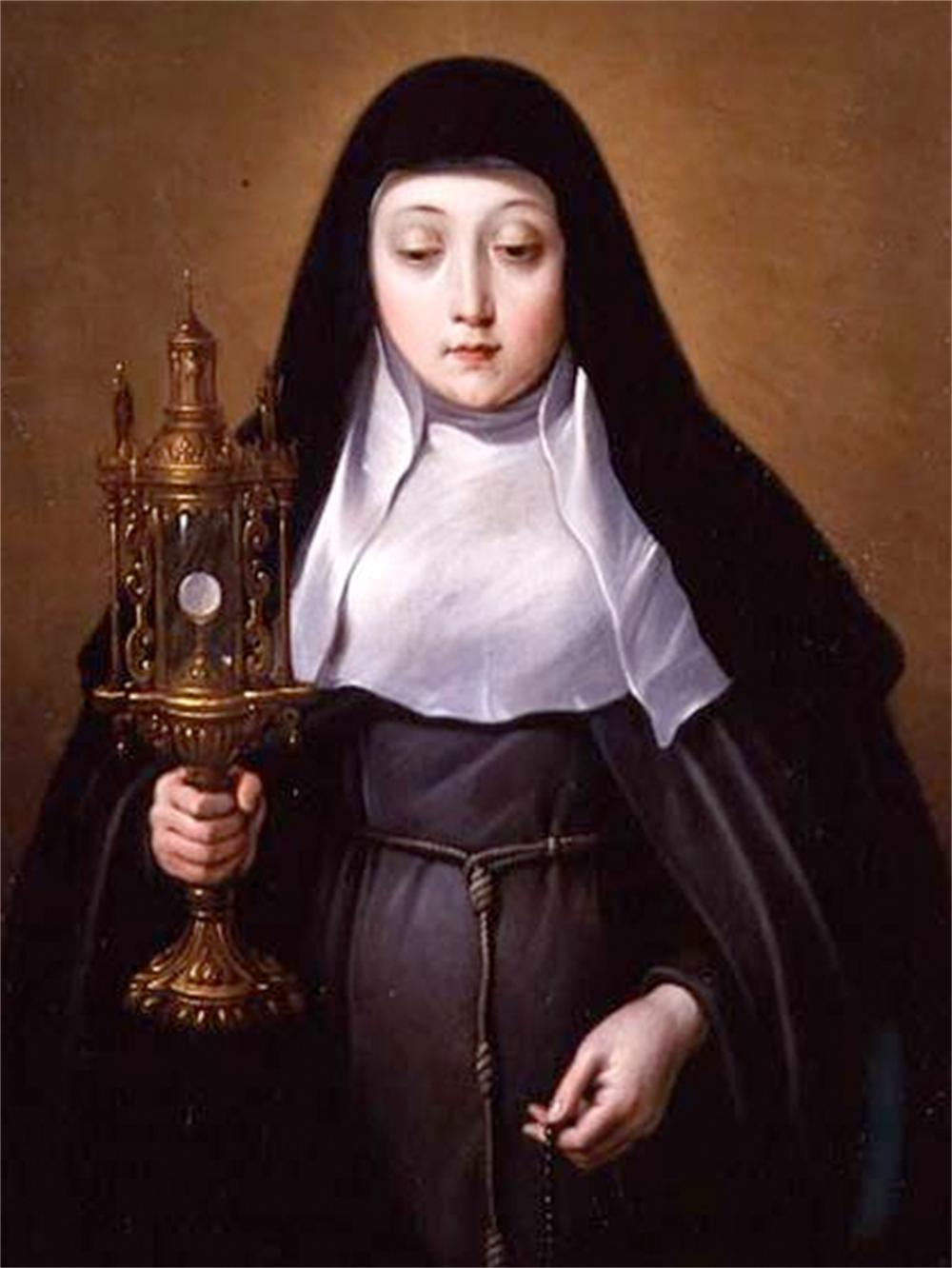
 Add to favorites
Add to favoritesSt. Clare of Assisi
| Feast day | September 25 |
| Patron | of Cork, Diocese of Cork |
| Birth | 550 |
| Death | 620 |

St. Clare of Assisi was born in Assisi on July 16, 1194, as Chiara Offreduccio, the beautiful eldest daughter of Favorino Sciffi, Count of Sasso-Rosso and his wife Ortolana. Tradition says her father was a wealthy representative of an ancient Roman family and her mother was a very devout woman belonging to the noble family of Fiumi.
As a young girl, Clare dedicated herself to prayer. At 18-years-old, she heard St. Francis of Assisi preach during a Lenten service in the church of San Giorgio and asked him to help her live according to the Gospel. On Palm Sunday in 1212, Clare left her father’s home and went to the chapel of the Porziuncula to meet with Francis. While there, Clare’s hair was cut off and she was given a plain robe and veil in exchange for her rich gown.
Clare joined the convent of the Benedictine nuns of San Paulo, near Bastia, under Francis’ orders. When her father found her and attempted to force her back into his home, she refused and professed that she would have no other husband than Jesus Christ. In order to give her the greater solitude she desired, Francis sent Clare to Sant’ Angelo in Panzo, another Benedictine nuns monastery.
Clare’s sister Catarina, who took the name Agnes, joined her at this monastery. The two remained there until a separate dwelling was built for them next to the church of San Damiano.
Overtime, other women joined them, wanting to also be brides of Jesus and live with no money. They became known as the “Poor Ladies of San Damiano.” They all lived a simple life of austerity, seclusion from the world, and poverty, according to a Rule which Francis gave them as a Second Order. St. Clare and her sisters wore no shoes, ate no meat, lived in a poor house, and kept silent most of the time. Their lives consisted of manual labor and prayer. Yet, they were very happy, because Our Lord was close to them all the time.
San Damiano became the center of Clare’s new order, which was then known as the “Order of Poor Ladies of San Damiano.” For a brief period of time, the order was directed by St. Francis himself and by 1216, Clare became the abbess of San Damiano. Ten years after Clare’s death, the order became known as the Order of Saint Clare.
While serving as the leader of her order, Clare defended them from the attempts of prelates to impose a rule on them that more closely followed the Rule of Saint Benedict than Francis. Clare was so devoted and dedicated to Francis that she was often referred to as “alter Franciscus,” or another Francis. She encouraged and aided the man she saw as a spiritual father figure, and took care of him as he grew old.
Following Francis’ death, Clare continued to promote her order, fighting off every attempt from each pope trying to impose a rule on her order that would water down their “radical commitment to corporate poverty.”
In 1224, an army of rough soldiers from Frederick II came to attack Assisi. Although very sick, Clare went out to meet them with the Blessed Sacrament on her hands. She had the Blessed Sacrament placed at the wall where the enemies could see it. Then on her knees, she begged God to save the Sisters.
“O Lord, protect these Sisters whom I cannot protect now,” she prayed. A voice seemed to answer: “I will keep them always in My care.” In that moment, a sudden fright struck the attackers and they fled as fast as they could without harming anyone in Assisi.
St. Clare became sick and suffered great pains for many years, but she expressed that no pain could trouble her. So great was her joy in serving the Lord that she once exclaimed: “They say that we are too poor, but can a heart which possesses the infinite God be truly called poor?”
On August 9, 1253, Pope Innocent IV declared Clare’s rule would serve as the governing rule for Clare’s Order of Poor Ladies. Two days later, Clare died at 59-years-old. Her remains were placed in the chapel of San Giorgio while the church dedicated to her remains was being built. At Pope Innocent’s request, the canonization process for Clare began immediately, and two years later in 1255, Pope Alexander IV canonized Clare as Saint Clare of Assisi.
The construction of the Basilica of Saint Clare was finished in 1260, and on October 3, 1260 Clare’s remains were transferred there and buried beneath the high altar. Nearly 600 years later, her remains were transferred once again to a newly constructed shrine in the crypt of the Basilica of Saint Clare. Her body is no longer claimed to be incorrupt.
The Order of Poor Ladies was officially changed to the Order of Saint Clare in 1263 by Pope Urban IV.
St. Clare was designated as the patron saint of television in 1958 by Pope Pius XII, because when St. Clare was very ill, she could not attend mass and was reportedly able to see and hear it on the wall in her room.
She is also the patroness of eye disease, goldsmiths, and laundry.
Clare is often pictured carrying a monstrance or pyx, to commemorate the time she warded off the soldiers at the gates of her convent with the Blessed Sacrament. St. Clare’s feast day is celebrated on August 11.
Views: 40


